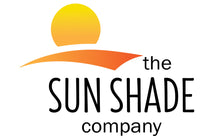FAQ about Sun Shade Structures
Q: How much is shipping?
A: Add your preferred shade to your cart and head to check out. Once you add your address it will calculate your shipping cost.
Q: What are the differences in residential and commercial shade structures?
A: The Sun Shade company specializes in commercial-quality shade structures to IBC (International Building Code) 2012 standards no matter if it's for commercial or residential use. Residential shade sails are typically available online or by awning manufacturers and typically include a canopy with a D-ring attachment. The canopy can be tensioned using hardware or other means such as rope and is secured as desired by the end user. As opposed to commercial shade structures which will require an engineered footing to support the structure.
Q: Can you engineer the shade structures to meet local requirements?
A: Yes, our shade structures can be engineereed to meet local wind requirements upon request should they exceed the standard design.
Q: What types of foundations will the shade structure require?
A: The amount of concrete required for the shade structure depends on:
- type of structure
- size of the structure
- location
- elevation
Larger structures or structures with higher entry heights can expect to have larger foundation requirements due to the additional loads put upon the frame.
Q: What building codes apply to my structure?
A: Depending on where the permitting will take place, the structure may need to meet the building code specified by either the city or the county. When engineering a structure, Superior will request information regarding the installation location of the shade structure to ensure the structure and foundations are engineered to meet local building code.
Q: Will permits be needed? If so, what is the process?
A: Permitting requirements are often determined by the end user. Traditionally HOAs, churches, and multi-housing applications will not require permitting unless done as part of an in-house procedure. City projects will normally require permitting. The process for this consists of obtaining stamped drawings for applying for a local permit that adheres to the required building codes at the local permitting office.
Q: Where are these structures manufactured?
A: Our shade structures are proudly made in the USA. Our shade manufacturing facility is located in Carrollton, Ga.
Q: What is the timeline for purchasing a shade structure?
A: The answer for this can vary by the type of structure being purchased and the complexity of the design.
A typical shade order turn around is 7-8 weeks.
Q: What is the best way to optimize shade for my space?
A: Keeping the entry height as low as possible and utilizing the largest shade structure that can fit in your space are two of the simplest ways to maximize shade for your area.
Q: Why choose The Sun Shade Company for my shade needs?
A: Here are three great reasons to choose us:
- We offer over 1,000 standard shade structures at very affordable prices
- We're proudly manufactured in the USA
- We have the ability to create custom shade structures for nearly any unique space
Q: How long does the fabric last?
A: Our fabrics carry a ten-year limited manufacturer’s warranty from the date of delivery against failure from significant fading, deterioration, breakdown, outdoor heat, cold, or discoloration. Should the fabric need to be replaced under the warranty, The Sun Shade Company will manufacture and ship a new fabric at no charge for the first six years, thereafter pro-rated at 18% per annum over the last four years.
Q: What kind of maintenance does the fabric require?
A: The canopy itself requires very little maintenance over the course of its life. The most important aspect of maintenance is ensuring the canopy cable remains properly tensioned over time. This may require the replacement of a cable every 5 years. Additionally, northern and coastal customers should be aware of inclement weather such as snow and hurricanes and ensure the canopy has been removed.
Q: Do your shade structures protect against harmful UV rays?
A: Yes, however this answer varies by color and fabric type. See our Color Options page for additional information.
